If there ever was a golden age for the sales ops – it is now! The sales ops team are equipped to perform post mortems on sales performances and tell their leaders what went wrong, calculate the current trajectory of a deal and forecast better, combine historical data and current trends that their sales goals always reach. The sales team succeed because they are now armed with tools, data, and training they need at every step of the sales lifecycle. All this makes the sales ops team the “unsung heroes” of an organization whose best practices gets the organization winning.
But the sales teams don’t have it easy. Customer expectations are constantly changing and to compete, sales deals need to get creative, especially with enterprise sales. These challenges mean that it is important to have a robust sales operations (sales ops) team in place who can provide the necessary superpowers to your sales team to be productive and efficient.
Different functionalities and best practices of the sales ops team
When you look at the sales ops function, you’ll realize that their role usually cuts across two dimensions – strategy and tact. Their job requires them to possess knowledge of decision areas like designing the overall sales strategy, talent management, compensation management, integration of automation tools like CRM, lessening downtime in closing deals, etc. Companies rely on them for making the sales process seamless, forecast and report, train, map territories and even implement tech that would close deals faster. To achieve this, it is their tactical knowledge that provides the right means to gain the necessary objectives defined in the sales process while their best practices act as the ‘secret ingredient’ that makes the sales process decadent. However, often sales ops is relegated to being a pure sales support role, that is they do everything that a salesperson does not, which is a gross misuse of the person in that role.
According to CSO Insights’ first annual Sales Operations Optimization Study, sales team expects that sales ops ‘deliver key decision-making data to executives’ which fits with their broad selling trends and help them create targeted deals and close said deals faster.
Some of the broad areas where sales ops deliver significant impact are:
- Setting up the right pipeline management
- Accurate revenue modeling and forecasting
- Setting up processes to close deals faster
- Recognizing customer success and retention strategies
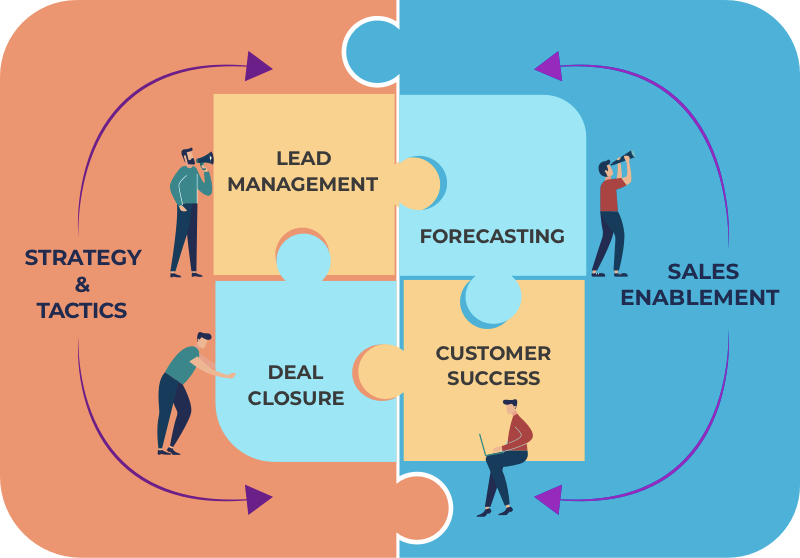
In short, the sales operations team works with every aspect that touches sales. By definition, its primary involvement is supporting the sales function itself. Their mission is to align the sales processes with the goals and objectives of the sales team, ultimately increasing revenue and maximizing wins.
Setting up the right pipeline management
“A sales pipeline encompasses every stage of your sales process. An opportunity moves from stage to stage of your pipeline based on concrete actions, which is usually represented visually in your CRM. Because sales processes differ from company to company (and even product to product), your sales pipeline should be unique and reflect the typical buyer’s journey.”
Hubspot
There is a significant positive downstream impact when the pipeline definition is given adequate thought. When structured correctly, the sales pipeline stages provide sales reps insights on the customer’s current stage in their journey. This enables more accurate forecasting of when a deal will close as well as activities needed to move the prospect from one stage to the next.
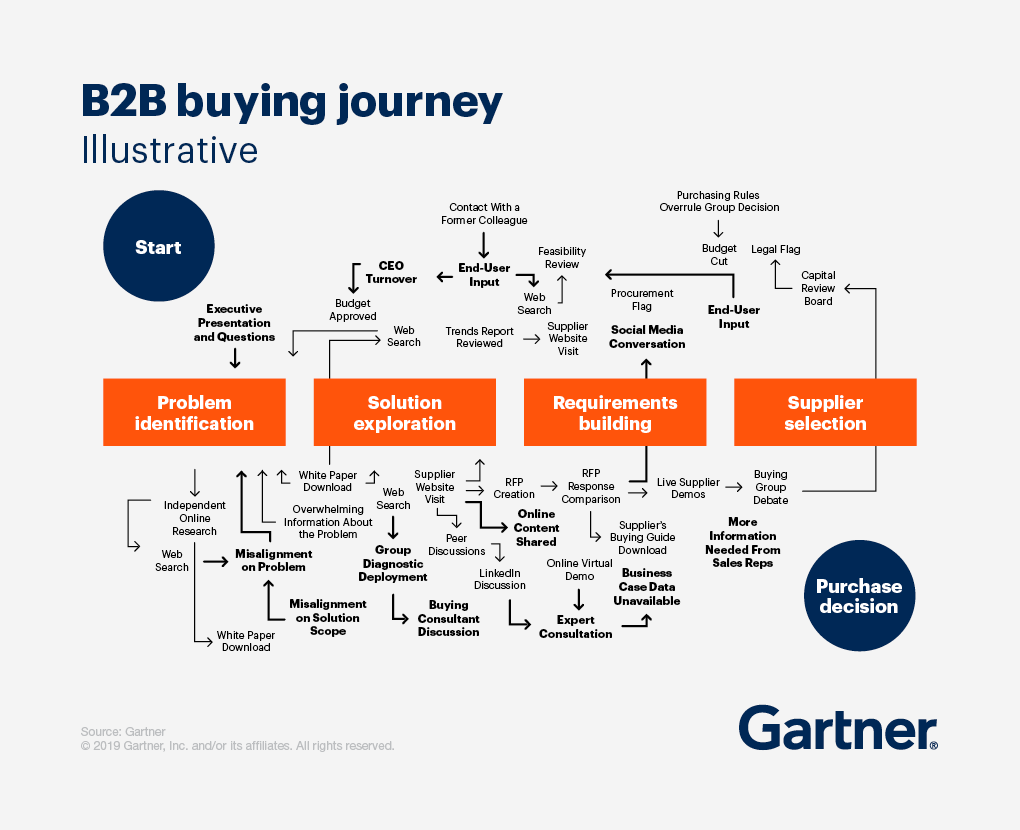
Considerations when defining pipeline stages:
- 5-7 stages are perhaps ideal, any less and there’ll be confusion on how to move the prospect forward, and more stages imply it’ll take longer for traversing prospects through them
- The stages are mapped as closely as possible to the buyer’s journey.
- Work with both marketing and sales to define robust qualifying criteria for leads that flow into the pipeline.
- This way quality of leads in the pipeline increases which not only improves win rates but ensure that sales teams time is spent on converting the most relevant leads.
- Clearly define an entry and exit criteria from one stage to the next.
- This ensures the right information is available about the prospect and activities needed to move the prospect can be well defined.
- Set an expected deal conversion time from one stage to the next.
- This will provide a sense of how long your sales cycles are expected to be and how many leads need to be generated for the pipeline to be healthy at all times.
- Identify deals that may be taking longer or shorter than the benchmark so that either the process can be adjusted or specific attention can be given to that deal.
A well-managed pipeline then means better forecasting of when deals can close and when the money hits the bank.
Accurate revenue modeling and forecasting
Forecast accuracy’ is an oxymoron. It has been found that only when rigor and discipline replace fear and subjectivity, forecast accuracy improves
2018 Sales Operations Optimization Study
Sales ops manage and analyze the data coming from the sales pipeline. To achieve this, sales ops must:
- Define the dynamics and components (such as customer acquisition, bookings, ARR, customer churn and satisfaction, gross profit) that would drive accurate forecasting, identify risks and hidden opportunities.
- Establish a sales forecasting model that is baked into the business model. This would analyze the lead sources and creates a forecast based on the value of a customer and the current status of the opportunity in the sales pipeline.
- Recognize the customer’s behavioral cues to better understand the high risk and low risk and good deals.
- Communicate with the entire sales team about the importance of collecting data and keeping it clean.
- Conduct regular auditing operations to ensure the sales reps are not optimizing for the wrong objective.
- Clearly define training programs that help sales reps to forecast accurately and close deals faster.
The right forecasting adds value to an organization, especially on financial performance, followed closely by market share and consumer satisfaction. To cite an instance, the finance team relies on forecasts to develop budgets for the capacity plan and hiring while the forecasts will also help sales ops with territory and quota planning, supply chain management, sales strategy, and production capacity. The right forecasting model will help to generate the right set of KPIs for the sales reps that would best benefit the organization ultimately affecting the company’s top-line, profit and margin.
Setting up processes to close deals faster
The State of Sales report by Salesforce estimates that sales reps spend only 34 percent of their time actually selling.
It takes a lot more than just a quote to close a deal. Despite best efforts, deals fall through, at times for something as seemingly trivial as whose contract will be used as the template for the agreement. How a deal is put together has a bearing on how many people are involved and consequently, how much time is needed for the stakeholders to approve the deal. With buyers having endless options at their fingertips and sellers not producing accurate and professional sales related artifacts (minus errors and inefficiencies) for prospects quickly, many sales reps fail at this stage making the time invested behind the deal futile.
Fact: 35–50% of sales actually go to the vendor that responds first.
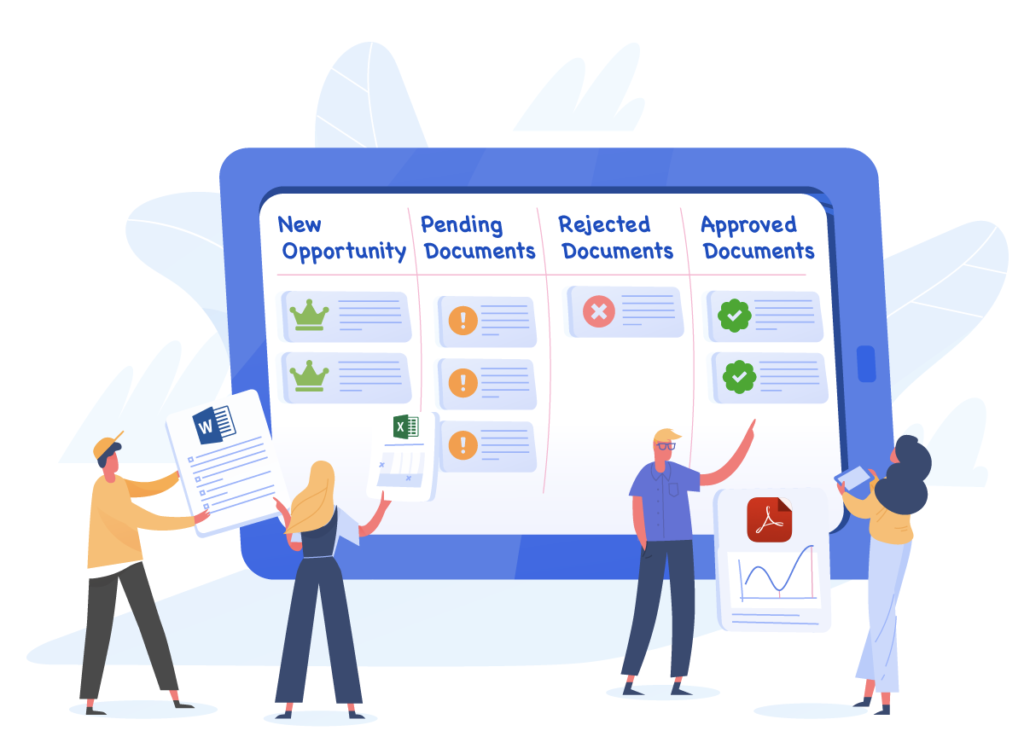
Given the effort it takes from both marketing and sales to get a prospect to this stage, structuring the deal closure process right is perhaps the most critical of all, some considerations are:
- Select the right automation tool, preferably a deal desk that takes into account price control, version control, margin approval accuracy, sales process standardization and response time to requests for quotes (and other sales documents).
- Integrates easily with your CRM
- Integrates with your order management suite, service desk, and billing systems
- Manages not just quotes and proposals but also Statement of Work and Master Service Agreements
- Provides rich insights to help improve not just your business and pricing models but even contract sections that are debated most
- Define a robust approval workflow and business rules that make it easier to identify which stakeholder needs to be involved when and how
- Monitor the workflow diligently to unearth roadblocks if any, your automation tool should assist here
- Analyze regularly the activities and ‘win-data’ of sales reps to predict the likelihood of closing deals.
The right automation in conjunction with effective pipeline management and data analysis will help sales reps reduce their total time spent working a deal. It accelerates the sales cycle by automating proposal and quote process across channels.
Recognizing customer success and retention strategies
Retention – not only does it make companies – but it also breaks them. For this reason, poor user retention has become the silent killer”
Reforge
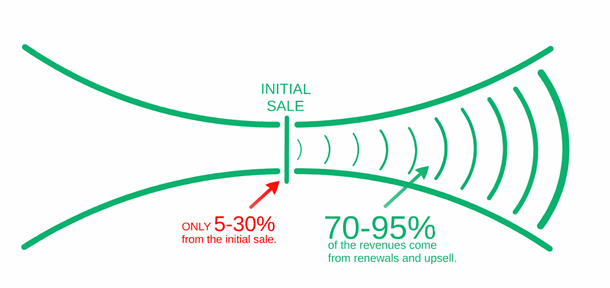
With the amount of time invested in acquiring each customer, it means that there is too much at stake at each stage. Repeat business is important for any organization and for SaaS companies, 70-80% of their revenue needs to be recurring. Many companies today have dedicated customer success teams who are responsible for renewals, cross-sells and up-sells. However, to prevent infighting amongst sales and customer success team, clear ownership definition is needed. Only the right synergy between these two teams will reduce churn and improve renewal.
| Customer success teams | Sales reps |
| Act as advisors to customers and focus on improving solution adoption so that renewal is a natural outcome. | Focus on the renewal process and associated transactions. |
| Streamline change management, constantly engage stakeholders. | Build strong rapport with stakeholders within the client’s organization. |
- Restructure organization dynamics where sales is responsible for renewals and the CS focuses on user adoption and change management.
- Create an approval matrix where sales leadership team has visibility into the new contracts presented before the customer.
- Identify the key data insights to track customer retention forecasting by applying metrics such as customer lifetime value, product usage and churn rate to apply them to customer segments and cohorts and improve the overall product/service.
Both customer success and sales ops can align with one another to improve the quality of leads, help close deals faster, orchestrate advocacy of the product, manage expectations properly, etc. This alliance of customer success and sales team ensures that the customer receives what they had signed up for.
Aligning sales enablement with sales operations
A strategic, ongoing process that equips all client-facing employees with the ability to consistently and systematically have a valuable conversation with the right set of customer stakeholders at each stage of the customer’s problem-solving life cycle to optimize the return of investment of the selling system.
Forrester
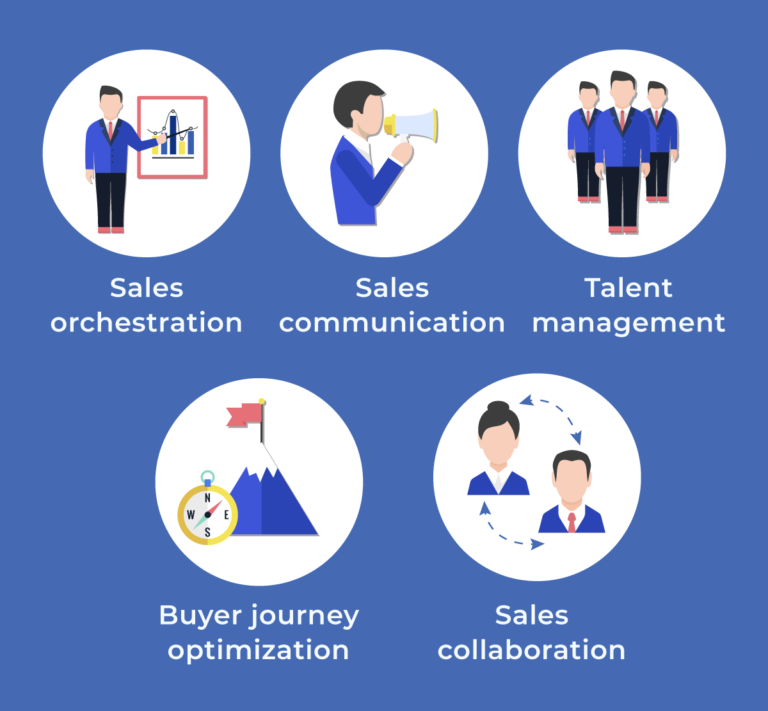
Just as sales ops is responsible for data analysis, sometimes a deeper insight is needed to determine the root cause of the problem and how to fix it. This is where sales enablement steps in. To achieve this and improve the win-quotient in market research and lead gen phase, the sales ops implements tools that provide necessary training, coaching, and other employee development activities. These tools come with a functional goal and a customized systemic process to accomplish sales effectiveness. To get this collaboration working, here are some of their best practices.
- Provide access to the right content by adopting tools that are flexible, organized and integrated with existing CRM. Package it in easy-to-find, easy-to-consume, bite-sized chunks materials that are accessible anywhere.
- Arrange for regular training and communication across their content, tools and workflows.
- Provide meaningful customer experience by aligning the selling processes and content strategy to the customer’s conversion path.
Usually co-owned by sales and marketing teams, the sales enablement team is responsible for salespeople to achieve quota in a scalable, predictable, and repeatable fashion. It helps to democratize sales teams and provides the right resources, tools and knowledge to become successful. Sales ops is a critical stakeholder in the sales enablement team to provide insight on what content and training are working, and what may be needed by the sales team to engage prospects.
What we have found is that while these two roles often do not overlap, but their collaboration is integral for the success of their sales team. We will soon have a separate blog talking about why sales ops should work with the sales enablement team.

Want to be on top of your sales game? Sign up with Revv



One Response
SO much time could be saved to ramp-up b2b upselling and decrease churn, but sales op people continue to ignore the huge time-saving benefits of voicemail bypass keys. You can lead a horse to water but can’t make him drink.